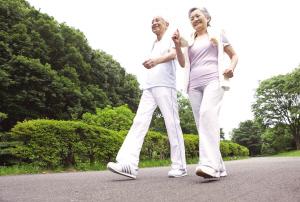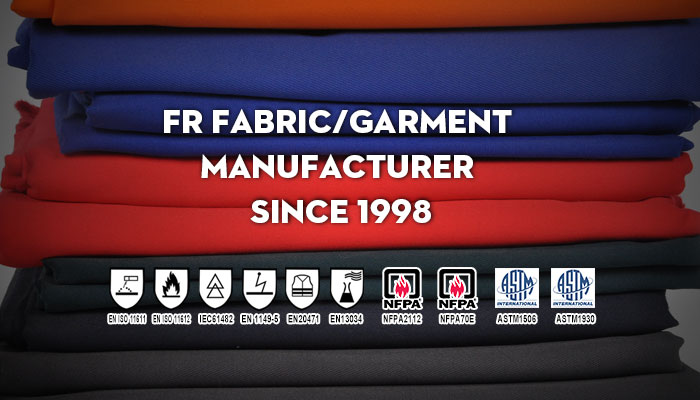 China's textile and clothing market usually divides “middle-aged†into one category. This type of clothing is old and monotonous in color, and most products do not reflect the features suitable for old age. Middle-aged people and old people are different people. They differ not only in their age, but also in their living environment, psychological mood, physical condition, and economic ability. They need clothing, bedding, shoes and hats according to their own situation. There are some unconventional features. In order to meet the needs of this group of people, textiles for the elderly should be separately classified as “silver hair textileâ€.
China's textile and clothing market usually divides “middle-aged†into one category. This type of clothing is old and monotonous in color, and most products do not reflect the features suitable for old age. Middle-aged people and old people are different people. They differ not only in their age, but also in their living environment, psychological mood, physical condition, and economic ability. They need clothing, bedding, shoes and hats according to their own situation. There are some unconventional features. In order to meet the needs of this group of people, textiles for the elderly should be separately classified as “silver hair textileâ€. According to the main data of the sixth national census, the proportion of people aged 60 and over in China has reached 13.26%. It is estimated that there are currently nearly 200 million elderly people in China, and the total number of people aged over 60 in the world has reached 600 million. More than 60 countries have entered the ranks of the aging population. The available data predict that the elderly population in China will exceed 300 million people by 2025, 400 million by 2045, and reach 1/3 of the total population by 2050.
As the elderly grow older, their health conditions are increasingly plagued by various diseases. The demand for textiles and clothing will also be diversified, and will shift from comfort and health care to assisted treatment and rehabilitation.
The production value of the silver hair industry is about RMB 1,000 billion, which makes older people living more comfortable, healthy and safe. It is of great significance for maintaining family harmony and social harmony. Healthy aging refers to the individual's functions in the five aspects of physical, mental, intellectual, social, and economic performance that remain in good condition during the elderly.
huge market. At present, the output value of China's aging industry is about 1,000 billion yuan, of which only annual consumption potential of elderly clothing is at least 200 billion yuan. Currently, there is a large market demand, and the supply is low. The relationship between supply and demand is unbalanced, and there is an urgent need for exclusive production and sales of old-age products. Relevant persons predict that by 2030, it is expected to form a pattern of three-points in the world of old age, children, and adults.
The elderly people in developed countries are relatively affluent groups. They do not have the burden of raising children, buying a home or buying a car, and they have a fixed pension and medical insurance system to allow them more money to improve their quality of life. Unfortunately, most companies still do not realize the huge business opportunities.
At present, about 45% of the elderly aged 60 to 65 in China’s cities are still employed, while 42.8% of the urban elderly have deposits. In addition, only one pension has reached 1 trillion yuan. It should be a huge market that exists in reality. The Chinese people respect “filial pietyâ€. Spending on their parents for the holidays and holidays will greatly increase the purchasing power of the elderly.
The old age group is a “sunset crowd,†but the old-age goods industry is a “sunrise industry.†The old goods industry refers not only to single items such as clothing, home textiles, crutches, but also includes daily care, medical care, and other aspects. At present, China's old-age goods industry has a "soft underbelly" with few product categories and low technological content. It is far from meeting the consumption needs of the elderly population. The market is basically in a blank phase and urgently needs to be developed.
It is predicted that by 2025, Japan’s “silver industry†will have a market of 627 billion to 746 billion U.S. dollars.
The need for industry transformation and upgrading. At present, China's textile and garment industry is facing an appreciation of ***, foreign demand is low, raw materials and labor costs are increasing, and low-tech products have become weaker in domestic and foreign markets. We must look for new products with high added value and practical participation in the new round. The competition, while Yinfa Textile is still an undeveloped virgin land, there are not many people involved in scientific research, production and operation in this field.
At the same time, the development of science and technology is extremely rapid today. A large number of new achievements in high-performance materials, composite materials, nanotechnology, electronic technology, and biotechnology have emerged one after another. However, there are not many applications for grafting in the textile field. These new technologies will be used in the textile industry. Great accomplishments. The silver industry in China will be the most profitable industry in the 21st century together with ten industries such as real estate.
Health-care knitwear and home textiles have accounted for about 8% of knitwear and home textile products. According to statistics, sales of health-care functional textiles reached 100 billion yuan in 2009, which has caught up with annual sales of health food products, and will be 20% annually. The speed of the increase, a large part of which has been improved, can be dedicated to the elderly population.
The most prominent feature of the elderly people in the silver-haired industry with high technological content is the deteriorating health conditions, such as insomnia, forgetfulness, three highs, low back pain, visual hearing loss, various chronic inflammations, prostate or breast lesions, pruritus, and inconvenient mobility. . Older products should develop suitable products for them according to different conditions of the elderly, such as:
Comfortable and convenient practical textiles: textiles for healthy elderly people are mainly based on comfort, convenience, safety and practicality. Its underwear should be soft, moisture absorption, antibacterial deodorant, itching, easy to wear and easy to take off, etc., the coat should be anti-pollution and easy to decontamination, waterproof and breathable, shape memory, deep and hidden pockets, security, color style, traditional and modern combination Variety. Bedding should be moderately soft and hard and easy to sleep.
Complex multi-functional health textiles: For some elderly people suffering from chronic diseases, they need textiles that can help the rehabilitation of aging, such as far-infrared, negative ions, magnetic therapy, anti-ultraviolet rays, moisture, moisture permeability, antibacterial and anti-mite Clothing, can support upright rigid vests, squeezing the abdomen to assist with the defecation of the ribbon, action tracker, reminders on time (take medicine, drink water, etc.) device. The bedding, pajamas, etc. should be fire-retardant, low toxicity and so on. For the semi-self-disciplined and disabled elderly, the clothes should be easy to wear, leakproof and deodorant, and the incontinent's inner and outer pants should be easy to change the pad.
Intelligent high-tech textiles: These types of textiles should be combined with the latest scientific and technological achievements, such as clothing that can detect human body's physiological indicators: blood pressure, body temperature, heart rate, breathing, walking speed and posture, sleep and medication, etc. Simultaneously sent to the monitoring site, abnormality can be immediately reported to the police; dementia will be equipped with body tracking device, alarm; can automatically adjust the height and temperature and massage function of the mattress; voice-activated curtains; with playable music, radio, alarm clock Pillow for the telephone, further envisages that the most advanced robot and clothing can be combined to assist the elderly in their actions.
Supporting shoes and socks hats and bags, etc.: The elderly's shoes require non-slip, soft, heat preservation, moisture permeability, antibacterial and deodorant, and easy to wear off; caps should be cold, windproof, sunscreen, rainproof, crashworthy, and can be used with glasses, hearing aids, radios, etc. MP3, masks, scarves and other combinations; socks to insulation, deodorant, antibacterial, soft, breathable, moisturizing and other special effects. Such as the treatment of varicose veins progressive socks, Diabetic special socks, blood stasis, reduce edema socks, etc.; package should be light, fast, anti-fouling, waterproof, anti-theft, multi-cell, anti-lost and other functions.
Other textile-related products: Ultra-lightweight wheelchairs, crutches, umbrellas, folding chairs, walkers and elderly sports equipment, elderly assistive treatment and rehabilitation equipment can be made of high-performance fibers such as carbon fiber.
The development of the silver-finishing industry should first of all lead to the attention of the society and the industry through various means. A special research team should be organized to understand the aging situation in China and the world, which items and products can improve the quality of life of the elderly, and strive for all walks of life. The scientific and technological workers collaborated to graft the latest scientific research results onto textile products, and through the combination of production, education and research to form a branch of industry, industry and trade, gradually established the brand and marketing network of franchised products for the elderly, and made the “silver hair industry†bigger and stronger. .
Flame Retardant Fabric is a special functional fabric, generally used to customize flame retardant work clothes. According to the material, it can be divided into 5 kinds of fabrics such as Cotton Flame Resistant Fabric, cotton polyester fr fabric, cotton nylon fr fabric, arimid fabric, modacrylic fabric. Among them, aramid and modacrylic fabrics are made of natural flame retardant fiber and have permanent flame retardant properties.
Advantage of flame retardant fabric:
High quality cotton
Perfect protective characteristics
High tenacity, durable to use
High fastnesses, soft touch, comfortable
Proban, Pyrovatex and FrecotexTM treament are provided
Extreme low content of formaldehyde by FrecotexTM

Certification of flame retardant fabric:
Xinke Protective flame retardant fabric has inspection reports from various countries such as EN 11611, EN 11612, NFPA 2112 ext., which can meet the protection standards of various countries. In addition, we have our own testing center, all equipment is synchronized with Europe and the United States, ensuring the accuracy of test data and better serving customers.
Packing and shipping:
We use 5mm thickness, 5.5cm inner diameter for professional export of thick paper tubes and customized packaging bags for customers to ensure that customers receive intact finished fabrics.
Application:
Xinke Protective flame retardant fabric widely used in construction, shipyard, welding, oil, gas and offshore industries etc.
We trust we are your right choice supplier in China for flame retardant fabric business.
Flame Retardant Fabric
Flame Retardant Fabric,Fire Retardant Fabric,Fireproof Fabric,Fire Rated Fabric
Xinxiang Xinke Protective Technology Co, Ltd. , https://www.coverallsuit.de